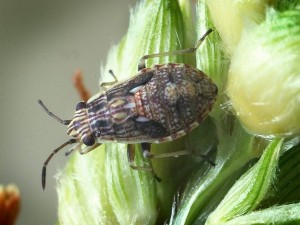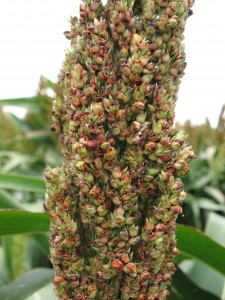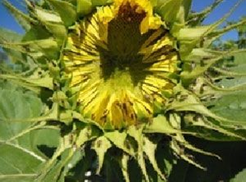 A farmer has to take into consideration a number of factors during the germination and subsequent growth of seedlings and crops. Bad weather, unavailability of nutrients and pest damage are just some of the issues that a farmer has to be prepared for. While bad weather is something that cannot be controlled no matter what, prevention or control of pest damage is one thing that farmers can take care of to make sure they get abundant produce. One such pest of agriculture is the Rutherglen bug. Rutherglen bugs are mainly sap suckers and may cause damage to susceptible plants in a way similar to that caused by aphids.
A farmer has to take into consideration a number of factors during the germination and subsequent growth of seedlings and crops. Bad weather, unavailability of nutrients and pest damage are just some of the issues that a farmer has to be prepared for. While bad weather is something that cannot be controlled no matter what, prevention or control of pest damage is one thing that farmers can take care of to make sure they get abundant produce. One such pest of agriculture is the Rutherglen bug. Rutherglen bugs are mainly sap suckers and may cause damage to susceptible plants in a way similar to that caused by aphids.
Rutherglen bug is best known as a seed-feeding pest, attacking grain as it develops and fills. However, in some seasons, large numbers of nymphs and adults can cause damage to establishing winter or summer crops. Their populations can build up in summer weeds, and move from these into establishing winter crop, feeding on and killing small seedlings. Large numbers of Rutherglen bugs moving out of crops poses a threat to nearby establishing summer crop. The adults migrate into fields from local weed hosts, or more distant sources in spring. Infestations can be large and the period of invasion prolonged. The damage caused by these bugs may include flower abortion, reduced pod set and seed development. Direct feeding on developing seed may affect oil quantity, quality and seed viability. These bugs can persist into windrows, and at harvest cause problems with seed flow through harvesters, and by raising the moisture content of the grain to above acceptable standard.
 The main issue with Rutherglen bugs around harvest time is contamination of harvested grain. When they are in very large numbers they can cause a number of issues at harvest; live bugs in the sample can result in rejection of a load at the delivery point. In some seasons the infestation can reach plague proportions, typically when the senescence of weed hosts in spring and early summer forces adults and nymphs into nearby crops. Although Rutherglen bug is usually a pest in spring, in rare instances large infestations have occurred in autumn with seedling crops decimated by the feeding of adults and nymphs. In very large numbers, these bugs can damage seedling crops purely by weight of numbers feeding on seedlings. The bugs maintain their populations on fallen sunflower seeds and migrate to cotton as the seedlings emerge. They suck the cotton seedlings dry resulting in an establishment problems and gappy stands. This situation can also arise in fields with poor hygiene where weeds act as a winter host. They can also build in some winter crops such as canola and then move into adjacent seedling cotton in the spring.
The main issue with Rutherglen bugs around harvest time is contamination of harvested grain. When they are in very large numbers they can cause a number of issues at harvest; live bugs in the sample can result in rejection of a load at the delivery point. In some seasons the infestation can reach plague proportions, typically when the senescence of weed hosts in spring and early summer forces adults and nymphs into nearby crops. Although Rutherglen bug is usually a pest in spring, in rare instances large infestations have occurred in autumn with seedling crops decimated by the feeding of adults and nymphs. In very large numbers, these bugs can damage seedling crops purely by weight of numbers feeding on seedlings. The bugs maintain their populations on fallen sunflower seeds and migrate to cotton as the seedlings emerge. They suck the cotton seedlings dry resulting in an establishment problems and gappy stands. This situation can also arise in fields with poor hygiene where weeds act as a winter host. They can also build in some winter crops such as canola and then move into adjacent seedling cotton in the spring.
The below article would further emphasize on the damage caused by these pesky creatures.
Rutherglen bugs storm northern crops
18/12/12
An infestation of Rutherglen bugs that may have ridden recent storms into the northern grains region is causing headaches for growers from northern NSW to Central Queensland.
Dr Melina Miles, Queensland Department of Agriculture, Fisheries and Forestry (DAFF) says large numbers of Rutherglen bugs have migrated into cropping regions since early November.
“While the exact origin of the bugs is unknown, it is likely they are being carried on storm fronts from inland regions where they have bred up over winter and spring on native host plants,” Dr Miles said.
“Large numbers are affecting seedling establishment, simply by weight of numbers feeding on the emerging seedlings.
 “In some instances the seedling crops are invaded by large numbers of nymphs walking out of weedy fallows into establishing crops.”
“In some instances the seedling crops are invaded by large numbers of nymphs walking out of weedy fallows into establishing crops.”
Dr Miles says ploughing a deep furrow between the seedling crop and the source of bugs, or a border spray may be sufficient to prevent ongoing infestation.
She says sorghum is vulnerable to Rutherglen bug from flowering to soft dough stage.
Grains Research and Development Corporation (GRDC)-supported research shows sorghum crops infested during flowering will fail to set seed, and infestations at milky dough stage will result in seed covered in small, dark feeding wounds.
Dr Miles says developing grain affected by Rutherglen bug feeding is light in weight, with poor germination. Under wet conditions, fungal and bacterial infections further degrade Rutherglen bug-damaged grain, infecting through feeding wounds on the seed.
If large numbers of Rutherglen bug move into the establishing crop, insecticide seed dressings will not prevent damage to seedlings, as each bug must feed to get a dose of the insecticide, and in doing so contribute to the plant damage. Therefore we need a solution that helps protect our plants and trees from damage, while at the same time does not harm the environment in any way. So, how do we fight this pest? Keep reading!
C Tech Corporation can offer a solution to overcome this problem. Our product Combirepel™ is an extremely low toxicity and extremely low hazard and eco-friendly rodent aversive. Combirepel™ is available in the form of solid masterbatches, liquid concentrate and in lacquer form. The product is compliant with RoHS, RoHS2, and REACH and is FIFRA exempted. This product acts through a series of highly developed intricate mechanism ensuring that rodents are kept away from the target application.
The fencing and tree guards can be coated withCombirepel™ to protect the trees, shrubs etc. from the damage caused by the grey squirrels. The product can also be incorporated into agricultural films, greenhouse films, plastic mulches used on a large scale in the agriculture as well as horticulture sector in order to avoid damages caused by these squirrels to fruits and vegetables. Also, the products can be directly incorporated in the polymer matrix during processing of pipes and tubing. Combirepel™ does not leach out, thus there is no soil pollution. Groundwater reserves are also not polluted. Also the non-target beneficial species like earthworms, bees etc are not affected.
The product is compliant with ROHS, ROHS2, ISO, REACH, APVMA, NEA, EU-BPR, and FIFRA exempted.
Contact us at technical.marketing@ctechcorporation.com if you’re facing problems with rodents and get best remedies to combat the pest menace.
Also, visit our websites:
http://www.ctechcorporation.com/
http://www.rodrepel.com/
http://www.termirepel.com/
http://www.combirepel.com/
Follow our Facebook pages at:
1] https://www.facebook.com/Combirepel-411710912249274/
2] https://www.facebook.com/Termirepel-104225413091251/
3] https://www.facebook.com/Rodrepel-120734974768048/
Follow us on our Twitter pages at:
1] https://twitter.com/rodrepel
2] https://twitter.com/termirepel
3] https://twitter.com/combirepel

